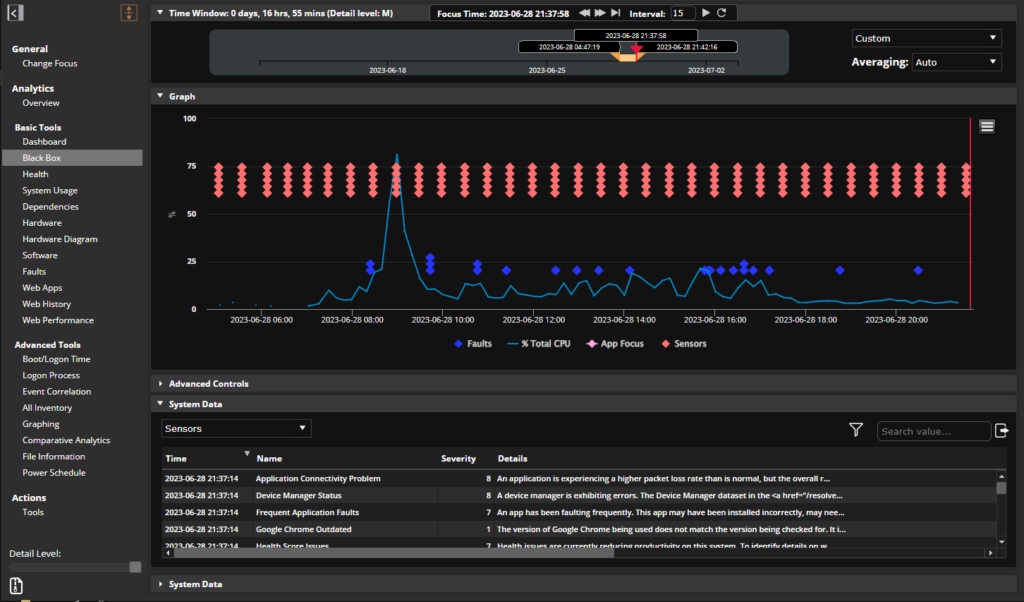Software Asset Optimization with SysTrack
Workplace analytics encompasses a vast amount of end user computing related information collected from a variety of sources, and a vital component of the topic is the observation of software assets. Obviously, a broad topic, we’ve chosen to break that further into three key categories: performance, usage and dependencies. Software performance monitoring is driven by the need to understand how well applications are working in the environment. Software usage is predicated on the idea of optimizing licensing and delivery to provide necessary applications. The last category, Dependencies, is vital to understand what pieces are necessary for software to function.
The importance of software performance
Software performance is itself a complex topic, but broadly the idea is to identify the answer to key questions like “why does my application keep crashing?” and “what applications take the longest time to load?” This incorporates key metrics like resource consumption details (CPU, memory, IOPS, network bandwidth) as well as number and frequency of faults or hangs. In many ways, this is one of the first items thought of in the context of software asset analytics, and it’s often one of the first things an end user notices about the environment. Diagnosing performance issues and understanding the resource consumption for the average user can help steer hardware requisition and delivery methods. Clearly, though, a preliminary question in many cases is exactly what packages belong in the environment.
Accurately observing software usage can be invaluable to a company. The ability to know which applications are used versus installed directly relates to the distribution of licenses, and that’s a direct cost driver. Another consideration is support cost savings made possible by making images less complicated. Intrinsic to rationalization is a host of potential ways to make sure that the delivery of applications to end users is as closely tailored to their needs as possible. There are some technical considerations to this as well, not the least of which is exploring the components or backend connections required for software in the environment.
Gaining insight into the required components a given package needs to function can be very important to choosing appropriate delivery mechanisms and options. Application compatibility concerns driven by incompatible components, fundamentally unsupportable system components, and complex networking requirements are all key to understand. Identifying what applications call on to function on a day to day basis dictates many of the decisions IT need to make to modernize and continually innovate with their delivery options.
We’ll be going into more depth on each of these categories as we release our upcoming Software Asset Analytics Kit. With each area, we’ll expand on some real use cases and provide some real-world examples of how each provides essential information for an environment.
Subscribe to the Lakeside Newsletter
Receive platform tips, release updates, news and more



